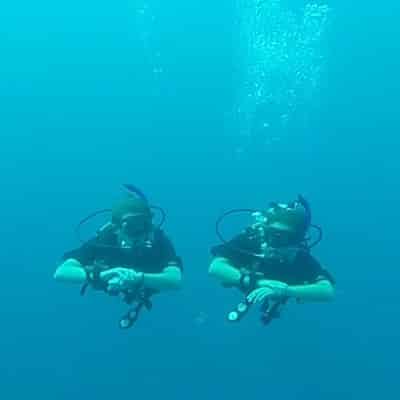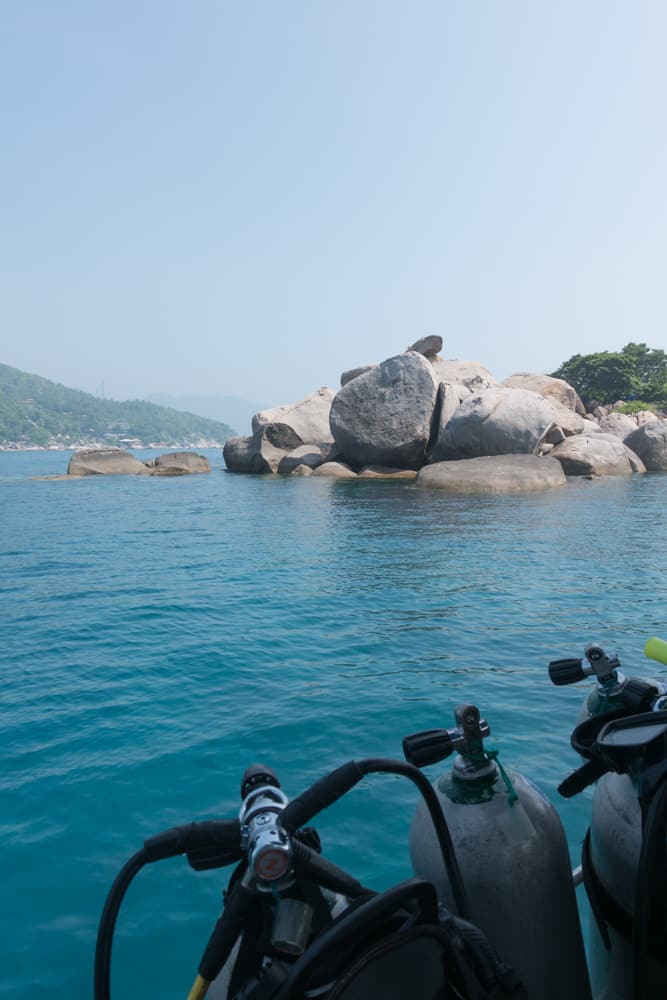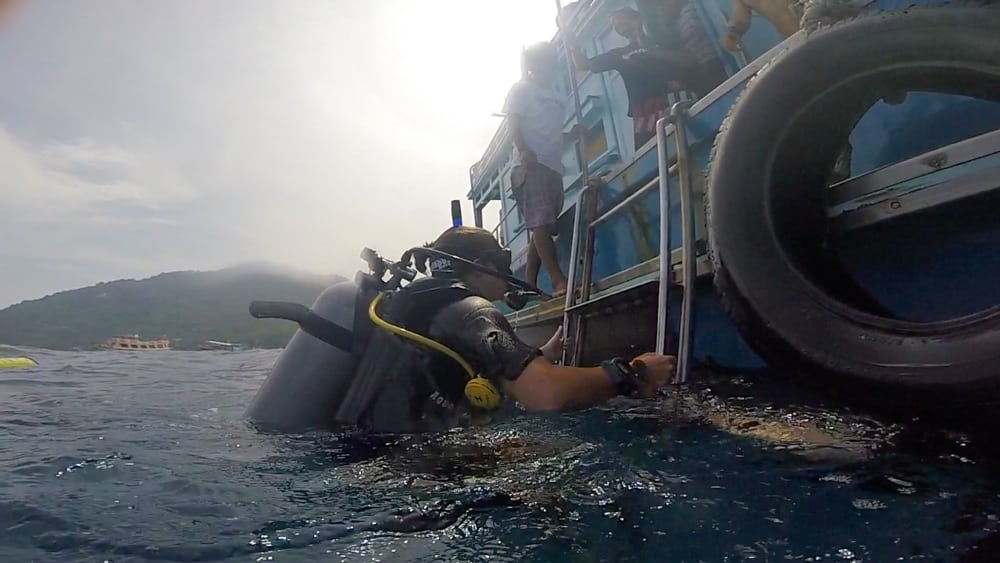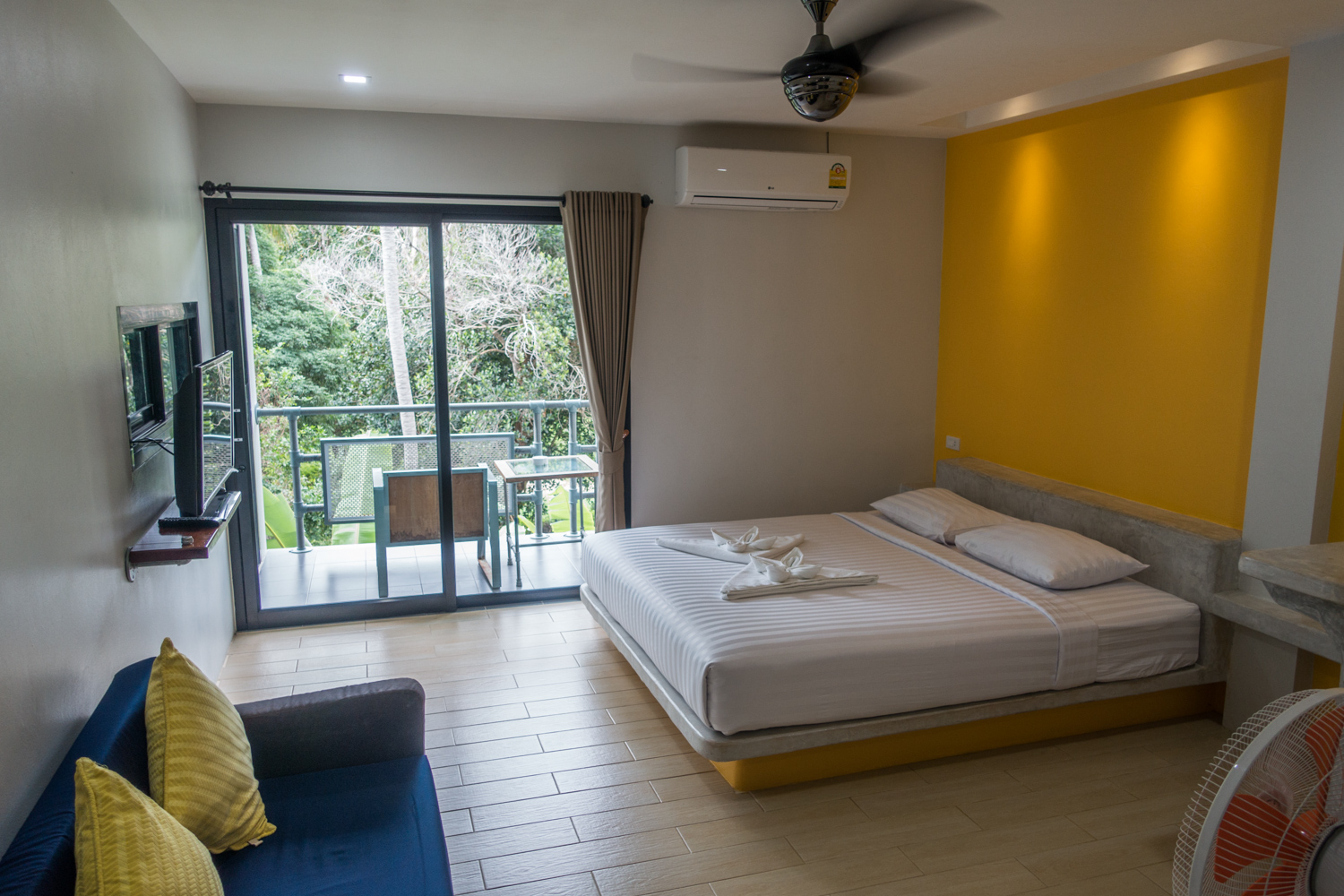As you know, we got Open Water 20 certified with Roctopus in Koh Tao, which allows us to dive down to 20 meters. It got us excited and we wanted to explore more and deeper parts of the Gulf of Thailand. We decided to also do our Advanced Open Water in Koh Tao, seeing how happy we were with Roctopus. With RAID this course is called Explorer 30, which would allow us to dive down to 30 meters.
After a couple of days relaxing above water, we started our Explorer 30 course reading a single chapter of theory, a quick quiz and an exam. Peanuts compared to the studying we had to do for Open Water 20. Once passed, we were ready to go back into the open water, once again with our awesome dive instructor Emma. With RAID (and most of the other dive training agencies) there are three core (obligatory) and two elective dives to be taken to get Advanced Open Water certified.
Our first core dive was Perfect Buoyancy: perfecting your buoyancy, the most important skill in diving, as you want to have control over your position in the water. By manipulating the air in your lungs (and if necessary the air in your BCD, Buoyancy Control Device, a vest that can be filled with air) you go up or down in the water. It’s a necessary skill to avoid contact with corals, for example, but even more important to gain confidence about being in control of your depth. Obviously you can’t just go diving as deep and as long as you want. There are all kinds of limitations, rules and consequences to exceeding certain depths. That’s what you’ll learn in the theoretical parts of the courses.
After a short break during which we have to stay hydrated, debrief and brief again for the next dive, we went down once more for our second core dive: Navigation. During this dive, you’ll learn to navigate under water: use a compass, map and/or distinctive natural characteristics of the environment to know where you are and where you want to go. One of the important things to know at all times while diving is what’s your position relative to your dive boat. We were thrilled taking turns in leading the group: you almost feel like a professional.
We returned to shore for a quick meal, before sailing out for a second time that day for our first elective dive: a Night Dive. Although this dive is not obligatory, it is recommended. You’ll learn to dive with limited visibility and experience the underwater world in the moonlight instead of the daylight. Everything looks different when it’s night and other marine life comes out of their hiding places. It was a bit scary to descend into the dark deep, as you don’t know what to expect and hope not to lose your buddy. But it’s a great experience to discover the underwater world in different circumstances. With a torch in hand you can actually so a lot further than you’d expect.
After day 1 we were exhausted. Fortunately there was no more theory to be learned, so we called it day. Day 2 started at 6h in the morning, when we left for our last core dive: Deep. In this dive you go down to a maximum of 30 meters. You need to keep an eye on your dive computer as you’re only allowed to spend about 10 minutes at this depth to prevent decompression problems. During the dive, Emma showed us the effects of pressure and tested if we weren’t experiencing nitrogen narcosis. In diver jargon it’s called being “narced”, a feeling of pleasant drunkenness (slowed thinking and reaction time) caused by breathing nitrogen at a high partial pressure. We both passed the test and stayed in control of our depth, reaching a maximum of 29.9 meters.
Our last but certainly not least dive was the elective dive to a Ship Wreck: a World War II US Navy ship that was artificially sunk in 2011. Brecht was really looking forward to this one and we even got to take our GoPro, allowing us to add some underwater photos to this blog post. Before going into the water, we had to plan the dive as well: study the map, draw it on a slate and use this while navigating around the ship. The ship wreck was definitely one of the best dives up till now!
It was quite the experience and we are proud to say we are now officially Advanced Open Water certified and ready to explore the marine life all over the world! There’s still lots of different diving specialities to learn as well, so you might read about some more courses in the future.












